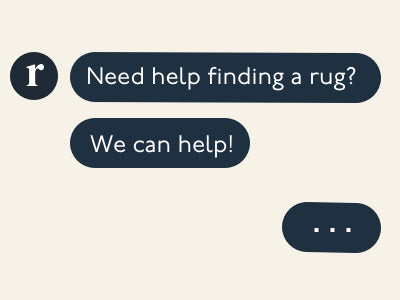














Order A Sample
Yorna - Rug Sample
Size 12" x 12"
Free shipping
Hand-Knotted Moroccan Rugs
Our Moroccan pieces are each one-of-a-kind. Much of our collection was woven between 30 and 100 years ago, and curated by us. Other rugs in our collection are fresh off the loom and made with traditional techniques. Moroccan rugs don’t come with a key. As with any painting or poem, their motifs have many subjective interpretations. Originally made for personal use, these rugs took months to weave, documenting a shifting tide of events and emotions in the weaver’s life.
Yorna Moroccan Rug
Use code EARTHLY20 for 20% off sitewide. Hurry, sale ends 4/30! *Discount can't be stacked. Custom rugs, swatches, rug pads, & gift cards excluded
Overview
-
Free Shipping & Easy Returns
Sustainable
Natural Fiber
Handmade
Ready to Ship
Only One Made
One-of-a-kind new rug, hand-knotted by Beni M'rirt tribes in the Middle Atlas mountains of Morocco
Natural inconsistencies are inherent in these unique, handcrafted rugs
- Only one in stock
- 100% wool
- Dimensions: 10'1" x 12'6" (308 cm x 380 cm)
- One-sided fringe: measures 4.7" (12 cm). Fringe is not included in the overall dimensions above.
- Plush pile: approximately 1.2" (3 cm)
- Color palette: cream, golden olive, blush beige
- These rugs are prized for their expressive design and construction. Their freeform edges meander and wiggle, unbound by constrictions of mass production
Care
+
- We recommend that you regularly vacuum your rug to remove dirt and grime. Depending on how heavily your rug is used, just once or twice a month is adequate. Too much vacuuming can wear down the knots and fibers more quickly. If you have a suction attachment on your vacuum cleaner, use that instead of a rotary vacuum.
- Every few months, you’ll also want to flip your rug over and vacuum the back to get the grit out of the foundation of the rug. It also helps to rotate your rug once a year to ensure even wear over time.
- Every 3-5 years, we recommend getting your rug professionally hand-washed. Please do not take it to get steam or dry cleaned—this will almost certainly damage the rug! Hand-washing requires the use of a pH-balanced shampoo, worked into the rug by hand with a soft-bristled brush, before being rinsed thoroughly. This process should be repeated a few times.
- In case of spills:
- If the spill is organic and non-oily (e.g., wine), use a paper towel or cloth to blot the liquid. Add some clean water sparingly to the spot to dilute the stain (or wet a paper towel or cloth) and blot. Repeat this process until the stain is removed.
- If the stain is persistent, resist the urge to scrub. Scrubbing can damage the wool fibers and more easily allow the stain to penetrate. You may try using a mild detergent, such as very diluted dishwashing soap, following the same blot-and-rinse procedure.
- If the spill is a denser, more oily liquid, try first to scoop what you can from the surface using a spoon or perhaps some heavier paper, and then do the blot-and-rinse. If the spill is significant, non-organic and/or composed of chemical substances, or the above methods don’t work, we suggest getting the rug professionally hand-washed as soon as possible.
- For rugs with deeply saturated color palettes, be sure to spot-clean them in an area that can be hosed down immediately after, as some color bleeding may occur.
Details
+
- Moroccan rugs don’t come with a key. As with any painting or poem, their motifs have many subjective interpretations. Originally made for personal use, these rugs took months to weave, documenting a shifting tide of events and emotions in the weaver’s life
- This rug has a minimal design with a single color field, showcasing the yarn's texture and sheen
Beni M'rirt descendants live in the town of Aguelmouss, not far from Beni Ourain territory, whose influence is visible in their rugs. Originally intended for use on the floor, Beni M'rirt pieces often feature meandering geometric designs and use a tight double knot construction.
Material DetailsWool, a staple in Moroccan rug design, was considered almost sacred to the Amazigh (Berber) people, whose nomadic lifestyle included sheep and goat herding. In addition to being available, wool is durable, long-lasting, and soft—so it’s super comfy to walk and relax on. In this piece, the wool pile is knotted onto a wool foundation, adding body and helping it hug the floor.
Moroccan wool is locally sourced and produces a thick, strong pile that feels soft and fluffy underfoot. A small amount of shedding is to be expected from this natural fiber, but it’s worth it: its high pile is beloved for its wild, tousled texture. You may find traces of dried hay, grass, or straw in your rug as grazing sheep often collect plant matter in their coats. Remove gently by hand or with tweezers. Please note that when wool gets damp, it will smell like a wet sheep. This is the scent of lanolin, which acts as a waxy barrier against dirt and moisture.
Reviews
+
Returns & Exchanges
+












